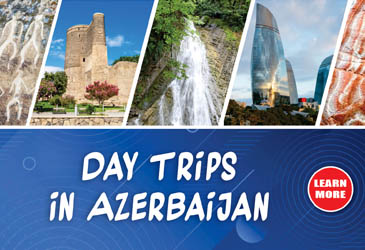Old City Tour
From 30 ₼
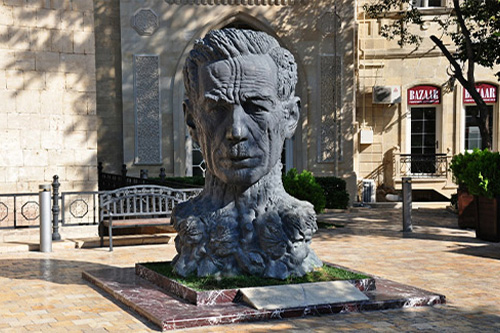
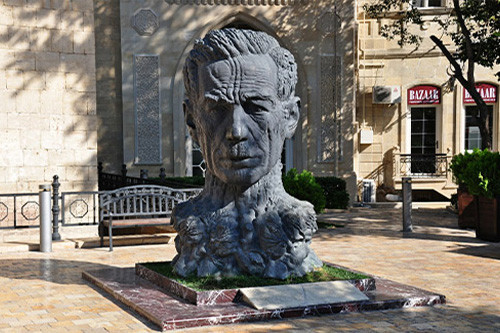
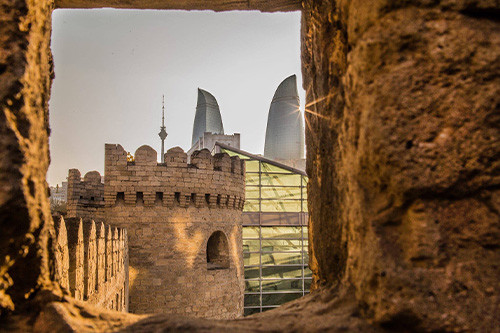
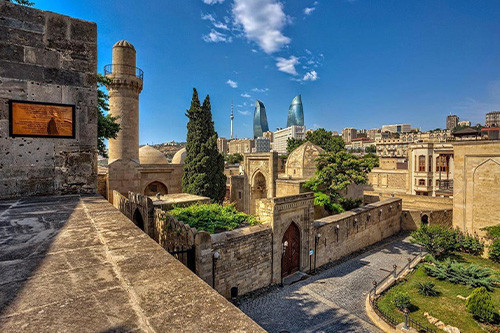
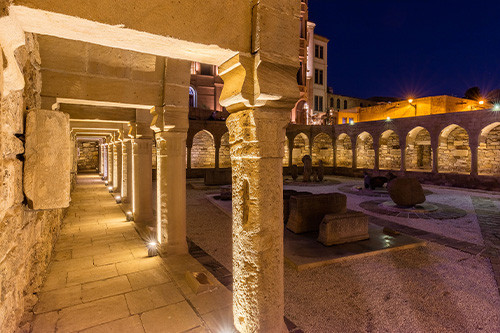
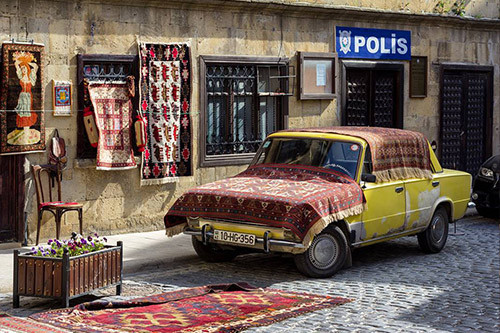
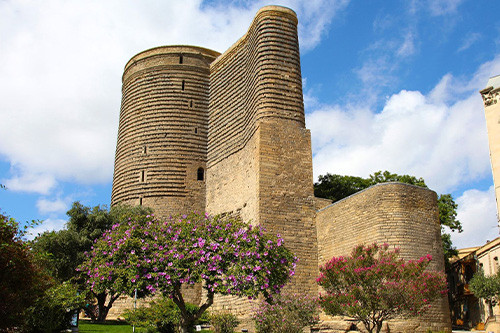
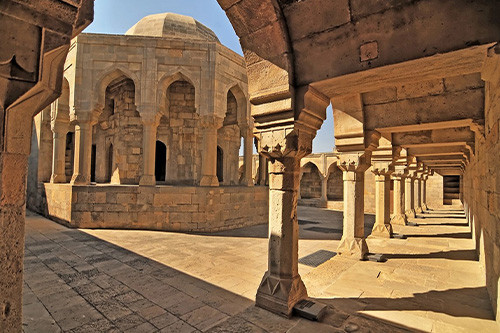
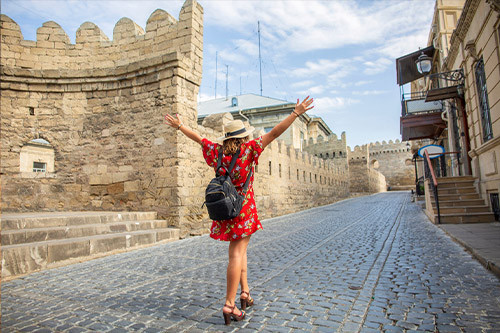
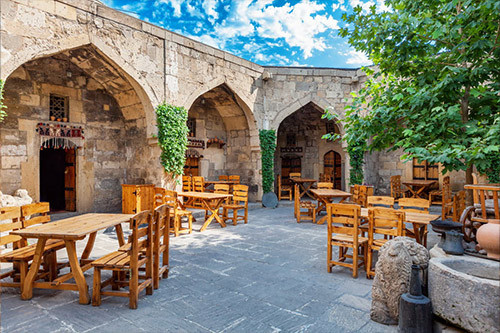
Similar Tours
Baku’s Old City is one of the most enchanting and beautiful places all around Azerbaijan’s capital. It was built more than 8 hundred years ago, back in 12th century and is a UNESCO World Heritage site in the heart of Baku, that showcases Azerbaijani architecture and historical landmarks in Baku in the best way possible. Baku Old City Tour with our company is a way to discover all the mysteries of Icherisheher, unravel the stories behind centuries old buildings like Maiden Tower or Shirvanshah’s Palace.
We start our Baku Old City tour nearby one of the most iconic landmarks in Baku – the beautiful Maiden Tower. This ancient tower is considered to be the symbol of Baku and the Azerbaijani nation in Itself. It is also a part of the UNESCO list of world cultural heritage. The mysterious Maiden Tower is also a source of numerous legends, that revolve both around the creation of it and its story, all of which will be told to you on our tour by the professional guide.
The Church of St. Bartholomew, or to be more precise the ruins of it, is situated right across from the Maiden Tower. Its creation is widely connected with a story of St. Bartholomew, who was one of Jesus Christ’s apostles. His life was tragic but bright: he played primal role in the spreading of Christianity in Asia and specifically, Albania, for which he gained a lot of enemies – mainly fire worshippers who subjected him to crucifixion in 71 AD. Then years letter this Church was built to pay respect to his life and achievements.
The next time we stop on our walking tour is the Hadji Baani hammam. It’s the oldest and largest bathhouse in the Icherisheher. It was discovered only in 1960, when the bathhouse was finally found beneath the ground. To this day this beautiful construction is one of the most stunning building on the territory of Baku’s Old City.
Caravanserais were a really important parts of lives of travelers back in the days. There were the safe havens for anyone, allowing merchants and their animals rest, sleep and get back their strength after a long tiresome road. On our historical Baku tour we will specifically visit two of the caravansarais that are located in the Old City. One, Multani, was created back in 14th century, built for thousands of Indian merchants, who regularly passed through Azerbaijan. Most of those travelers were fire-worshippers from the far-away city of Multani, so with time this beautiful place claimed that name for itself. The second one - Bukhara – is a beautiful architectural piece dated back to 15th century on one of the main routes crossing Azerbaijan. Most travelers from Asia, specifically Central Asia stayed in the Bukhara Caravansarai while travelling from Bukhara (hence the name). Both of those two caravansarais are considered to be a part of the Great Silk Way.
The Sailor house’s name speaks for itself. This house belonged to a famous azerbaijani sailor. This is evident from the decorum of the place: the building of the Sailor’s house in itself resemblance the deck of an old-fashioned ship. The whole house though now has been renovated and turned into an authentic carpet shop. The next stop on the tour is a house of Hiji Mamed Huseyn, who was a powerful local merchant and his house, or how locals call it nowadays, “the chained house”, is a wonderful piece of architecture of the pre-Soviet Union time period. Now it is the Museum of Archeology, which we will also visit on our Old City tour, serving its purpose even many decades later.
Residence of Baku Khans is a magnetic and breathtaking place, the creation of which dates back to early 18th century. The generations of rulers of the Baku Khanate existed and ruled within those walls, the wealth of it visible to the naked eye. Sadly, the last Khan who lived here was Huseyngulu Khan in the early 19th century.
The Double Gates of Baku’s Old City is the main entrance to the Icherisheher. This entrance was the only way inside the fortress up to the end of the 19th century, which provided the safety for the city. To this day this place carries a huge historical and cultural significance to Azerbaijan.
Back in the days, these massive walls reached the length of full 1.5 kilometers, whereas now the remaining parts only reach the length of 500 meters. It has five gates and unite 25 semicircles. It is quite hard to believe this nowadays, but in the medieval era the entirety of Baku City laid in the protective circle of Fortress Walls.
Truly, the pearl of Baku City - The Palace of Shirvanshahs, is one of the most mesmerizing spots you might come across in the Old City. Its beautiful construction, rich undertones and the professional work the masters of old times put in is visible to this day, shining in its full glory to this day.
Aliaga Vahid was a famous Azerbaijani poet, who wrote some of the most beautiful poems of his generations. He also happened to be one of the closest friends of the world-famous poet Sergei Yesenin. On our walking Old City tour we will visit his majestic bust, where our professional guide will tell you more about the life of such an important figure of Azerbaijani culture.
During the Soviet Union’s existence, a lot of filmmakers took a great liking to Azerbaijan, and specifically its opportunities regarding the movie industry. This resulted in a huge number of movies that were shot in Azerbaijan, such as “Diamond Hand”, “Amphibian Man”, “Aibolit-66”, “Tehran-43”, “Do not be afraid, I'm with you”, “A Day has passed”, etc. Especially Diamond Hand to this day is considered to be a widely known classic and the tour guide will take you to the specific spot where the widely known “Damn It!” scene was shot
And finally, last but not least, the breathtaking Juma Mosque, situated in the 5 minutes walk distance from the Maiden Tower, the starting point of our tour. It was built back in 1437, but was reconstructed and updated several times throughout the years. Additionally, they also built a minaret which survived to modern days as well. On this note, we’re ending this historical tour around the Old City, leaving the tourists to their devices.
- Tour Category: Day Trips
- Minimum number of people: 1
- Start Time: 15:00-17:00
- Duration: 2 hours
- Included: Professional English-speaking guide.
- Excluded: Insurance, personal expenses
- Note: The tour begins on the site in front of the entrance to the Maiden Tower.



